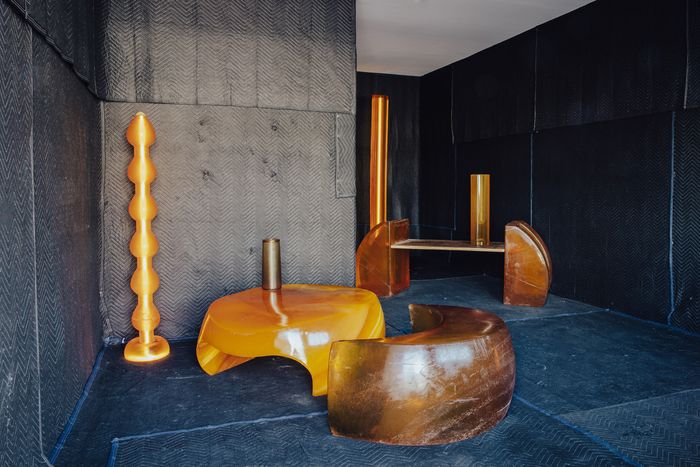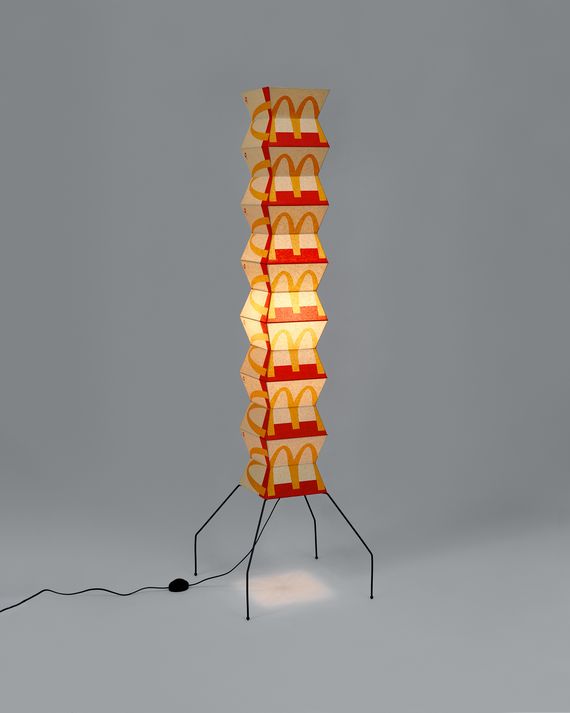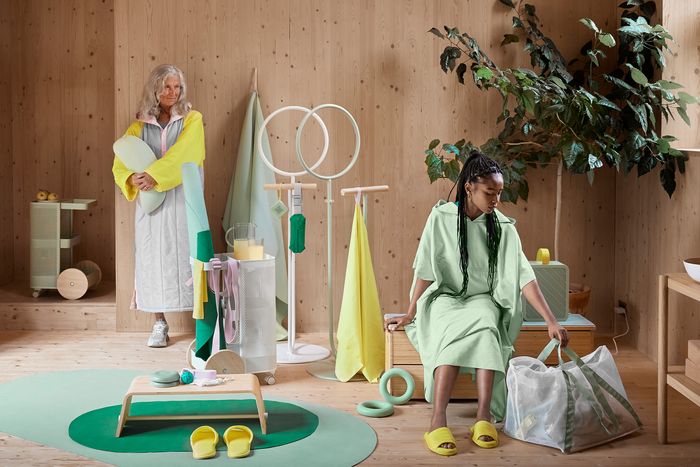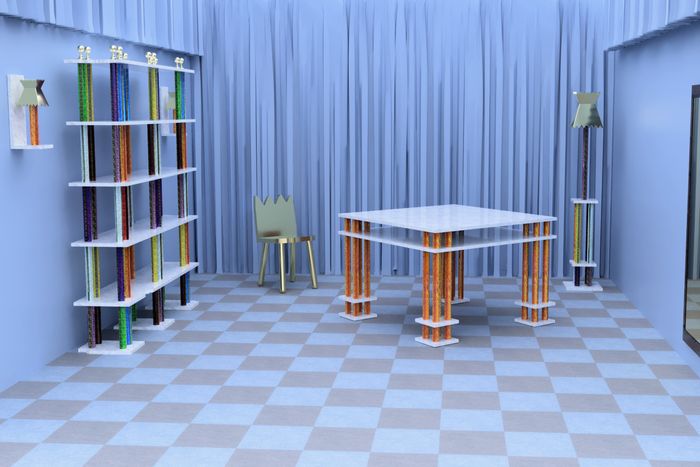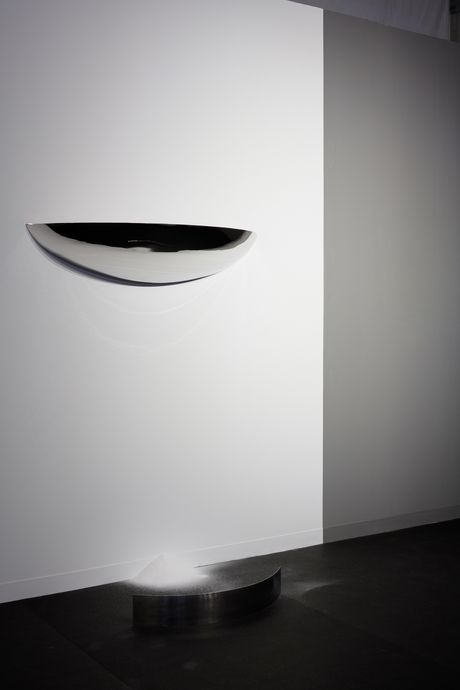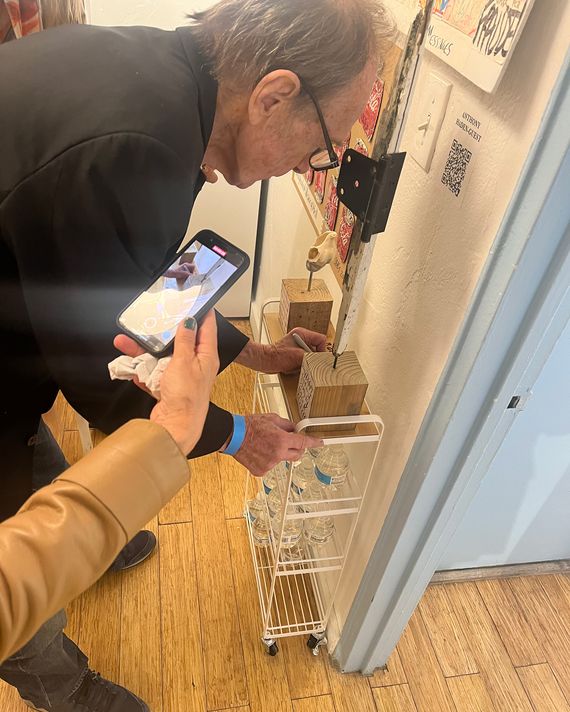
“Before the pandemic, people always brought the same thing year after year,” says Todd Merrill. “Now everybody comes with wildly different stuff.” The Tribeca gallerist was standing in his booth on Tuesday at the Design Miami preview, watching the crowd file into the giant tent containing the 2023 edition of the furniture and interiors fair across the road from Art Basel. Just hours after the VIP preview got underway, buyers had already purchased three of designer Christopher Russell’s Yellow Cubist Vessels in Merrill’s booth, and many more well-dressed passersby were admiring the rest of the debut offerings, including Draga and Aurel’s prismatic Flore Series Tables. It was a promising start to what would turn out to be a very busy week. Here’s a few other things that stood out, both in the main Design Miami tent and around the city.
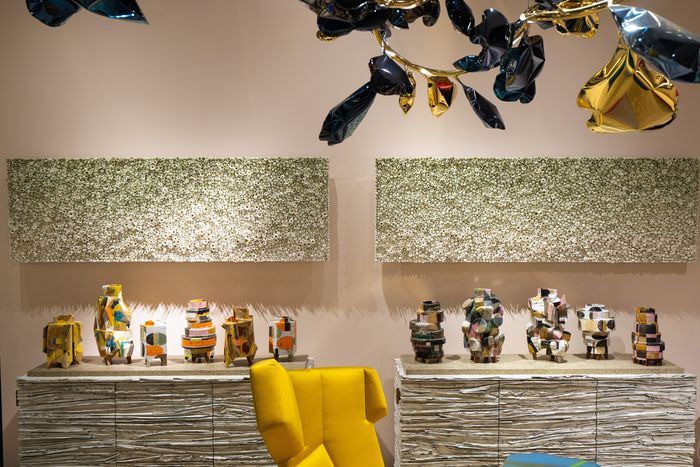
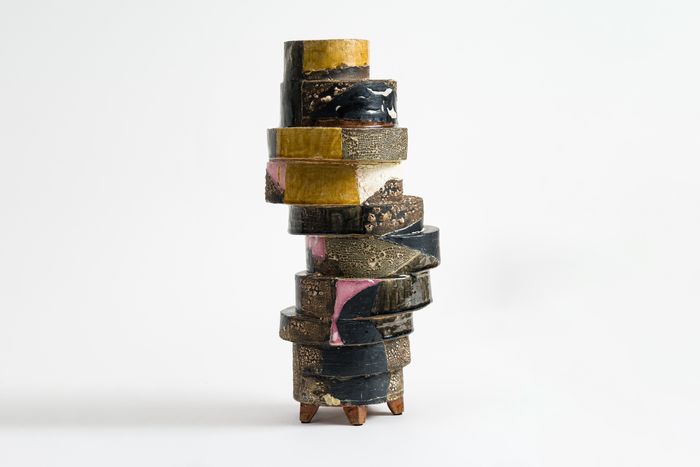
Rich Aybar’s “Raworkshop”
Recently relocated from Paris to Brooklyn, designer Rich Aybar brought his gelatinous, oddly suggestive polyurethane rubber furniture to the offsite Alcova exhibition — itself a transplant from Milan, where the show established a reputation as a place to see cutting-edge work in off-the-wall settings that have included a former abattoir and a decommissioned 19th-century military hospital. In Miami, Alcova curators Valentina Chiuffi and Joseph Grima took over the delightfully dank Selina Gold Dust Motel on Biscayne Boulevard; it was a perfect setting for Aybar’s work, described succinctly by its creator with a single adjective: “louche.”
Gyuhan Lee’s McDonald’s paper-bag lighting
“It kind of reminds you of Isamu Noguchi,” says Luis Sendino, founder of Barcelona-based Side Gallery. He’s right: The standing lanterns from South Korean designer Gyuhan Lee are more than a little reminiscent of the elegant rice-paper floor lamps from the 20th-century master. But while there’s plenty of modernist homages around the Design Miami main fair, Lee’s is one of the few that spikes its reverence with a bit of sly humor and a jab at commercial culture at the same time. A cheeky gesture in a city — and a week — dedicated to consumption.
Ikea, “Dajlien” series
It may seem odd to see the world’s foremost purveyor of budget bookshelves put in an appearance during the luxury-centered Basel. In fact, Ikea has never had a showing at Design Miami before with good reason. “We start our design process by thinking, What would be a fair price for this kind of product?” explains Linus Karlsson, chief creative officer at the company. But the line that made its debut on Lincoln Road is actually a perfect fit for the city and the crowd: the new Dajlien line, a home-fitness collection that includes benches, weights, and a clothes horse. The line is designed for all ages, but its small scale even works for kids.
Objects for Objects’s “Trophy Room”
Back at Alcova, Leonard Bessemer was presiding over arguably the weirdest room at the entire fair. In it, a table, a lamp, and one very heavy-looking bookcase—or should one say trophy case? Suturing together components from one of the country’s largest suppliers of sports trophies, the designer behind L.A.-based studio Objects for Objects created a series of oddball kitsch monuments, their marble surfaces unaccountably eaten away in places as though they’d been banged up in someone’s suburban basement. “I was like, ‘Here’s this European art fair, coming to America. Let me give them something very American,’” says Bessemer.
Nifemi Marcus-Bello’s “Omi Iyo”
One remarkable thing about this year’s Basel was how much politics there wasn’t: no big disruptive protests; just a few banners and projections on buildings and the occasional topical T-shirt. Plenty of exhibitors may have been trying to make a statement through their work — but few were as effective as Lagos-based designer Nifemi Marcus-Bello, whose sand-cast aluminum creations for L.A.-based gallery Marta included this sconcelike mirror with salt slowly pouring out of it, displayed near the entrance of Design Miami as part of its “Where We Stand” highlight series. The piece was inspired by a story Marcus-Bello heard of a migrant’s near-drowning in the Mediterranean. “After that,” said the designer, “he couldn’t bear the taste of salt.”
Anthony Haden-Guest’s “Believe Nothing You Read, Most Especially Not This”
Is it decorative design? An assemblage? Or a water caddy with two sculptures on top, created by New York society journalist turned artiste Anthony Haden-Guest? The artist himself was on hand at the booth for the technically defunct Kraine Gallery, the precursor of beloved East Village bar KGB. Having closed up shop 40 years ago, the gallery may be staging a return to Manhattan, and Hayden-Guest and a group of other artist friends came to Miami to help usher it back into the world. If his impromptu contribution was intended as a functional object, Hayden-Guest himself would not be the one to use it. “I don’t drink water,” he said. “It’s against my religion.”


